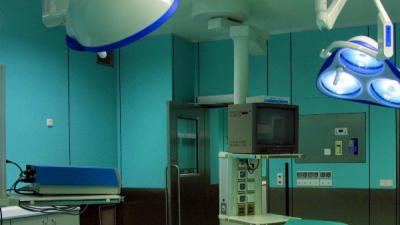There is a future for minimally invasive surgery to treat severe overweight (obesity), and children and young adults may also find themselves in a situation where surgery is the best option. Traditional bariatric surgery, such as gastric bypass surgery, has been proven to be effective, but it is not recommended as a standard treatment for young people, because too little is known about the consequences. This is evident from research by Dr. Givan Paulus, who obtained his PhD at Maastricht University on 16 April for research into surgical options to treat obesity.
–
Obesity (overweight) is a major problem, which is also constantly increasing. In the Netherlands, the number of cases in adults has risen from 17.7 percent to 20.4 percent from 2010, and in children and young adults from 5.9 percent to 7.0 percent. Bariatric surgery is the only proven effective long-term treatment. Bariatric surgery uses surgical techniques to reduce weight, such as narrowing the stomach or placing a gastric band. However, there may be very good reasons for not exposing patients to these irreversible anatomy-altering procedures. This is because serious complications can occur, such as wound infections, intestinal leakage, damage to the esophagus from stomach acid and intestinal obstruction.
BASIC-trial
More research is needed to assess the consequences of bariatric surgery at a young age before this technique can become a mainstream treatment. Within Maastricht UMC +, this is done in the context of the BASIC trial, where BASIC stands for Bariatric Surgery in Children. The BASIC trial is a study of the effects of gastric banding surgery in adolescents with morbid obesity (very overweight), in whom lifestyle intervention has not had the desired effect.
Folds in the stomach
Meanwhile, there are many other less invasive techniques that can be considered as alternatives to traditional bariatric surgery. Procedures already in use or under investigation range from space-consuming devices, such as the gastric balloon, to gastric stimulators. Paulus researched the different surgical techniques to treat obesity. He sees a future in particular for endoscopic folding of the stomach, the so-called gastroplication. In this technique, a type of stapler, which is inserted through the mouth and the esophagus, creates folds in the stomach, which reduces the stomach volume. This technique can lead to permanent weight loss and a decrease in co-morbidity. Sixty patients worldwide have now been treated in this way without significant problems and with encouraging weight loss as a result. Tucking the stomach led to a decrease in the feeling of hunger, an increase in satiety and therefore less food intake.
Benefits
The great advantage of this technique is that folds are made over the full thickness of the stomach wall, whereby the outer wall (serosa) comes to rest against the outer wall and can therefore fuse with each other. This keeps the folds neatly in place, unlike techniques in which the folds on the inside of the stomach wall (mucosa) are stapled. Gastroscopic examination one year after the procedure showed still existing folds on the inside of the stomach, which reduced the volume of the stomach. This technique, which eliminates the need to cut through the abdominal wall, seems to have major advantages.
– .


